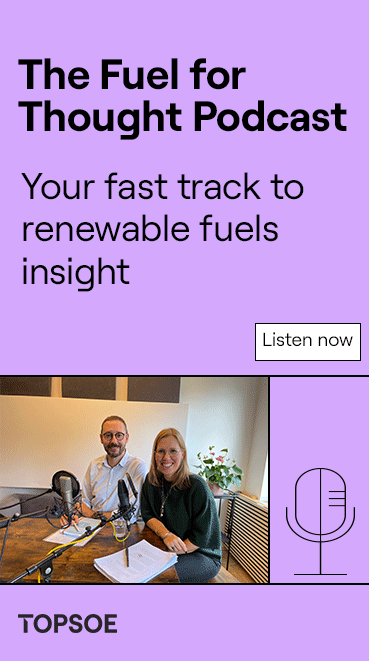The Effects of US Policy Uncertainty
- John Campbell
- Jun 25
- 5 min read

Policy chaos has contributed to a collapse in profit margins and a substantial decline in production, but higher RVOs and a modified 45Z credit could stimulate a quick revival.
The U.S. biobased diesel (BBD) industry has faced challenging times and an uncertain future frequently over the past 30 years. Led by farmers, it has continued to grow from very meager beginnings to a robust industry dominated by major oil companies accounting for an estimated $42 billion in economic impact.
The renewable fuels policy environment has never been as chaotic as it is today. Does renewable fuels policy fall under the rubric of “the green new scam” or is it an answer to the “energy emergency” declared by President Trump? Trying to outguess policy direction is futile, but we know that Trump 2.0 is far different than Trump 1.0, at least to date. In the first Trump administration, there were wins and losses for biofuels. For example, renewable volume obligations (RVO) under the federal Renewable Fuel Standard were set reasonably high, but they were mitigated by substantial amounts of small-refinery exemptions (SREs).
On tax policy, the industry is dependent on a new clean fuel production credit hooked to a carbon-intensity (CI) score included in section 45Z of the Inflation Reduction Act of 2022. Section 45Z was intended to replace the blenders tax credit (BTC), but the rules were not finalized by the Biden administration. While the U.S. Department of the Treasury and Internal Revenue Service released initial guidance regarding section 45Z and the production tax credit (PTC) this January, there have been further amendments as evidenced by the House committee’s draft bill in May to extend the 45Z tax credit through 2031 (from 2027). The consequence of this continuing ambiguity is that most renewable diesel and biodiesel producers are neither booking these tax credits nor able to monetize them.
Policy uncertainty has contributed to a collapse in profit margins and a substantial decline in production. Diamond Green Diesel, the renewable diesel bellwether jointly owned by Darling Ingredients and Valero, generated only 6 cents of EBITDA per gallon in the first quarter (Q1) of this year compared to 69 cents in Q1 2024, a 91 percent decline. DGD’s total renewable diesel production decreased by 36 percent during this period. Darling Ingredients stated on its earnings call that “DGD had a challenging first quarter with lower-than-expected margins … Receiving guidance on 45Z in late January created a choppy first quarter as supply chains had to be redirected, contracts had to be modified, and customers had to adjust.” HF Sinclair, another renewable diesel producer, indicated that “our goal is to have our renewable diesel business be break even, to slightly positive in these bottom-of-market conditions.”
In Q1 2025, total U.S. BBD production of 868 million gallons declined by 34 percent compared to Q4 2024 and decreased by 18 percent versus Q1 2024, as shown in the chart below. Renewable diesel production peaked in Q4 2024 at 865 million gallons but subsequently fell by 27 percent to 633 million gallons in Q1 2025. Biodiesel experienced a significantly larger decline than renewable diesel, with Q1 2025 production decreasing by nearly 50 percent from the prior quarter. This January’s monthly biodiesel production of just 66 million gallons set a new multiyear record low. Typically, there is an inventory buildup in the last months of a year when the BTC expires. This results in lower production the following quarter and a “risk on,” no-tax-credit environment.

Trade policy is not just about tariffs but also about the application of the PTC, in which eligibility for the 45Z tax credit is limited to producers of clean transportation fuels made from feedstocks produced or grown in the U.S., Canada and Mexico—as opposed to the old BTC, which allowed foreign feedstocks and production to qualify. This may encourage the greater use of domestic feedstocks, thereby strengthening domestic supply chains.
Total feedstock used for U.S. BBD production has nearly tripled from 13.4 billion pounds in 2020 to 38 billion pounds in 2024, as illustrated in the table below. While soybean oil constitutes the greatest share of vegetable oils, its usage in total BBD production has declined sharply from 63 percent in 2020 to 35 percent in 2024. Among waste feedstocks, used cooking oil (UCO) has grown its share exponentially by over 600 percent, from 1.1 billion pounds in 2020 to 7.4 billion pounds in 2024. In addition, tallow, which comprises 84 percent of total animal fats, has grown its usage in total BBD production from 3 percent in 2020 to 19 percent in 2024.

In recent years, there has been a robust expansion in both soybean crushing and renewable diesel capacity, which is at odds with an RVO that was disappointingly low. Soy crushers and renewable diesel producers may or may not follow through on announced capacity expansions depending on what happens with future RVO announcements* and especially SRE policy. Limitations on conventional ethanol blending spill over into demand for BBD beyond the BBD RVO. SREs are a hall pass for total biofuel demand unless exempt obligated-party volumes are reallocated to nonexempt parties.
Both the yet-to-be-finalized PTC and proposed California Air Resources Board rules reduce the viability of soybean oil as a feedstock for BBD, thereby pushing the demand for imported low-CI waste feedstocks such as UCO and tallow. As recently as 2021, the U.S. was a net exporter of waste feedstocks. The subsequent renewable diesel construction boom, led by the obligated parties, resulted in a complete reversal with the U.S. importing 7.5 billion pounds of waste feedstocks in 2024, as shown in the chart below. UCO comprised the greatest imports at 5.4 billion pounds and increased 80 percent year-over-year, of which 54 percent originated from China in 2024.

The proposed amendments to section 45Z would disallow use of the discredited indirect land-use change from computer models that assign CI scores for vegetable oils. This change would help level the playing field among feedstocks. Since 45Z eligibility precludes feedstock imports outside of North America, this may help offset the trend of declining soybean-oil usage.
How will all of the policy variables sort out? Keep in mind that the RVO drives total demand and tax policy allocates who pays the premium for BBD—consumers or taxpayers. Under the proposed PTC, policy changes will also drive relative feedstock values based on CI scores.
*Editor’s Note: This article was published in the Summer 2025 issue of Biobased Diesel®, which was printed shortly before EPA issued its 2026 and 2027 RVO proposal.

Author: John Campbell
Managing Director
Ocean Park
402-680-7111


































